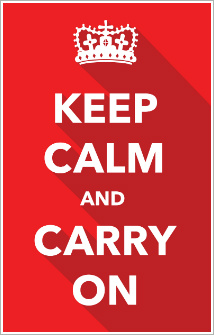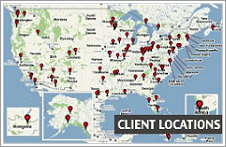You’ve come to the right place for buzzword-free info about work, workplaces, and workplace improvement. These posts are all about improving work processes, strengthening teamwork, sharpening management skills and leadership skills, improving communication, and more. This is info you can use right away, full of practical ideas in straight-talking plain English. Enjoy!
• Have a suggestion or question for a possible future post? Please let us know.
The power of positive questions

When it comes to workplace improvement, what’s better than good ideas?
Good questions.
By posing good questions on issues that matter, you can engage colleagues, deepen their thinking, and find common ground through dialogue.
You’ll even come up with better ideas, powered by all that additional brainpower and experience.
Here are seven sets of questions – waiting for a brave person (you) to start the conversation.
Engaging your mind
When was the last time you got so caught up in interesting work that you lost track of time? What were you doing? What was it — about the work itself, how you were going about it, its connection to a greater good — that made this such an engaging activity?
Seeing results
When you want to see the results of your work, what do you look at? How do you know that your effort is having a positive impact? If you could wave a wand and instantly create a more meaningful system for tracking results, what would it look like?
Tackling problems
What is your biggest challenge at work? What makes it so tough to address, and what is the great opportunity that lies within? How would you go about pursuing this opportunity if you had none of the workplace barriers that seem to exist? What creative approaches might make the difference?
Serving customers
When your customers talk about your organization behind your back, what do you think they say? Who has the highest praise, who is most critical…and why? What are they really saying? If you were in your customers’ shoes commenting on the work you do for them, what would you say?
Achieving unity and diversity
What gets greater emphasis in your workplace, unity or diversity? If it’s unity, does the pursuit of oneness prompt people to downplay their differences? If it’s diversity, does the workplace ever feel like a loose collection of conflicting styles and agendas? How can unity and diversity gain strength from each other? What can be done to achieve both of these workplace imperatives in maximum measure?
Giving and getting respect
Johann von Goethe said, “The way you see people is the way you treat them, and the way you treat them is what they become.” How does this play out in your workplace? What could be done right now to make respect one of the workplace’s greatest strengths?
Acknowledging the elephant
Is there an elephant in your workplace — a big problem or concern that no one ever talks about? Something that’s known to all and in desperate need of dialogue? If so, why is the elephant so unacknowledged? What are the risks of talking about it? What are the potential benefits?
Top 10 mistakes of well-meaning employees
 Take time for a quick reality check – because the following pitfalls can mess with the best of us.
Take time for a quick reality check – because the following pitfalls can mess with the best of us.
1. Assuming the worst. When facts are lacking, it’s easy to fill in the blanks with doom and gloom. Do some fact-finding and get the real story.
2. Focusing on what’s wrong. Every workplace has its dysfunctions. Pay attention to what’s going right. Acknowledge it, talk about it, imitate it, and build on it.
3. Writing people off. Bob is too opinionated, Jane is too quiet, Stan is too new, Kim is too whatever. Forget the labels. Focus on the strengths these people bring to the workplace.
4. Mistaking busyness for worthwhile action. Just because you’re busy doesn’t mean you’re getting anything done. Scrutinize your to-do list, find what’s unimportant, and ditch it immediately.
5. Not appreciating your own influence. Disempowerment is often self-inflicted. No matter how small your sphere of control, there is more you can do to get things done — as long as you believe it and take action.
6. Letting yourself blend into the woodwork. Too many people get commoditized at work. Strive to become your own brand. Stand out by leveraging your strengths, speaking up, and taking some risks.
7. Going for perfect when pretty good will do just fine. Some people pursue perfection regardless of the task. Know when you’re doing the equivalent of brain surgery (perfection desired) versus ditch digging (perfection optional). Adjust your time and effort accordingly.
8. Getting sucked in by the naysayers. Every workplace has its raging cynics. Hear them out but don’t let them pull you in.
9. Looking for ways to say no. Some people always push back when new work comes their way. Make yes your new default response, knowing that new assignments will bring more learning, more contacts, more opportunities, and more interesting workdays.
10. Failing to connect with a meaningful mission. There’s more to work than tasks and a paycheck. Know exactly whom you serve and how they benefit, because we all need some emotional compensation.
What new tools are forgotten in YOUR garage?

When you learn new ideas and gain news tools, you put them to work, right?
Yeah, so do I – or so I thought.
When spring sprung last year, I went to work planting a new flower garden.
It took several sweaty hours to break the ground, clear the weeds, till the soil, and build an edge.
The tools I used didn’t help. Most were old and worn out. Even my trusty ten-year-old Garden Weasel fell short when one of its bladed wheels broke apart.
Three hours turned into six. The sun climbed higher. The day got hotter. Eight hours in, I decided to save the planting for the next day.
That’s when it hit me. As I returned the old tools to the garage, I spotted new tools leaning against the back wall.
Yep, I had a full set of brand-new tools. They had been given to me as a gift several months earlier.
Why hadn’t I used these new tools in the first place – instead of slogging it out with the old ones? Great question!
I had forgotten they were there. I didn’t see them when I got started that morning. I reflexively went to the old ones in their familiar location in the garage. Your garden-variety excuses.
The next day, I used the new tools. The work went great, and I finished the job in three hours. The flowers took root and began brightening the yard.
But I’m left wondering: What else of value is in my possession but not in use? What other new tools can I put to work? What techniques have I learned recently that I should at least be trying? What newly learned ideas call for deeper exploration and discussion with colleagues?
We all have new and better tools, techniques, and ideas. Let’s make sure they don’t get forgotten in the back of our garage.
The “power” model that explains organizations
Most of what happens in organizations can be understood in terms of two opposing concepts: power over and power with.
Chances are you’ve experienced one or both of these first hand, without using the terminology.
Perhaps you had a boss who told you what to do, who rarely asked for your input, who used subtle threats and fake praise to control your behavior. If so, you were at the receiving end of the “power over” model.
Or maybe you had a “power with” manager who led with a meaningful mission, who favored teamwork and co-creation over command and control, who recognized and leveraged your strengths. Maybe your current manager fits this description. Maybe you are that manager.
The huge distinction between “power over” and “power with” shapes every aspect of work life.
For anyone who’s striving to improve their workplace, the power over/with model is essential for understanding what’s going on – and for uncovering current strengths and improvement opportunities.
That’s why the following chart is so important. Use it to deepen your own understanding. Share it with others to prompt dialogue and group discovery. And use the resulting insights to identify practical steps that you and others can take to strengthen your workplace.
| POWER OVER | POWER WITH | |
| PERSPECTIVE
In these very different work environments, people see things in very different ways
|
The world is viewed as generally hostile
Scarcity: “I need to get and protect my share” Mechanistic: the organization as machine Zero-sum game Leader as lion Divide and conquer Manageable pieces |
The world is viewed as generally friendly
Abundance: “There’s enough for everyone” Humanistic: the organization as social system Synergy: 1+1>2 Servant leader Strive to unite Chaotic whole |
| PRIORITIES
Here’s what largely determines how people go about their work in “power over” and “power with” workplaces |
Rules
Procedures: How to do it Compliance Competition Extrinsic rewards, threats, and punishment |
Principles
Mission: Why we do it Commitment Co-Creation Intrinsic motivation |
| ACTIONS
This is what you’re likely to see and hear |
Bemoaning what’s going wrong
Fixing blame Dwelling on weaknesses Hoarding and selectively handing out key information and resources |
Telling stories of what’s going right
Fixing processes Leveraging strengths Freely sharing whatever is necessary for the greater good |
| RELATIONSHIPS
Relationships are based on very different factors |
Fear
Being fearful that others will lessen our power Skepticism: “You will likely mess this up” Apathy |
Trust
Trusting others…and working to earn trust Confidence: “You will succeed at this” Empathy |
| DECISION-MAKING
One of the biggest differences is in how people make decisions in these work environments |
Exclusion: A small number of people are seen as qualified to make decisions
Group decision-making produces chaos My way or the highway Efficiency Win-Lose |
Inclusion: The best outcomes unfold when many people are involved in decision-making
Group decision-making fosters commitment Multiple paths Effectiveness Win-Win |
| LEARNING
Even in terms of how people are regarded for their knowledge and capacity, sharp differences are seen |
People are empty vessels who need to be told what to do
A few teach, some learn |
People bring abundant know-how and learn best by experience
Everyone teaches, everyone learns |
| OTHER DISTINCTIONS | Silos
Statements Direction Inform Supervise |
Systems
Questions Dialogue Inspire Engage |
| POWER OVER | POWER WITH |
Turn panic into success with these 5 practical actions

What do you do if you’re put in a role that’s way outside your comfort zone?
My friend Steve has an answer.
Assigned to lead a super-demanding IT project, he started to panic over his lack of technical know-how. But he pulled it together and turned his nightmare into a noteworthy success. The team got the job done ahead of schedule and under budget.
If you’re ever similarly overwhelmed, put this five-part Steve strategy to work:
1. Take copious notes. During team meetings, Steve wrote down key points, themes, and terms. He still does, taking time afterward to study the notes, make connections, and figure things out. This speeds up his learning process.
2. Build a network of trusted explainers. As Steve grew familiar with the technical details, he began to learn just how much he still had to learn. He built a bond with several trusted colleagues who would take his questions outside of regular team meetings. He’d scribble their answers in his notebook.
3. Make connections with people on their terms. When Steve needed information from the one person in the company who knew all about a particular operating system, he approached thoughtfully. The man was widely known as a brilliant yet prickly problem-solver who associated with very few people. Steve had heard that the guy was interested in all things automotive. So instead of launching into his computer questions, he started a casual conversation about his recent struggle with a bad transmission. The man’s problem-solving gears began turning, and they talked cars for 30 minutes. After that, Mr. Touchy was more than happy to answer Steve’s questions.
4. Pose key questions to help teams get smarter. Every once in a while, Steve would ask a “dumb” question at a project meeting. These were summary-type questions aimed at getting team members to question their assumptions, see the big picture, and reboot their thinking. For instance: “Let’s step back and take a look at the overall flow here. What does the user enter, how long should it take, and how again does this information get processed?”
5. Earn respect the old-fashioned way. As the weeks unfolded, Steve followed his three rules for earning respect: always put in a full week of work, always give an above-average performance, and make lots of friends. It’s common sense that’s all too uncommon. If you can exert your work ethic and your emotional intelligence on a regular basis, Steve says, “it’s just a matter of time before you’re a necessity.”




